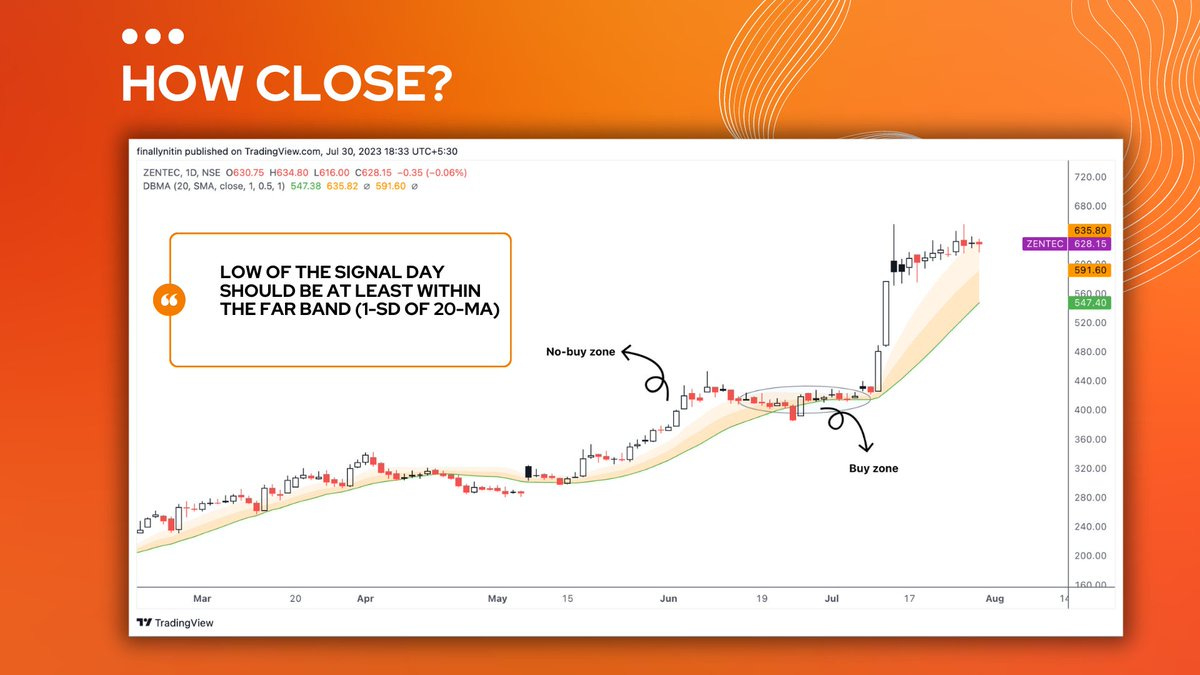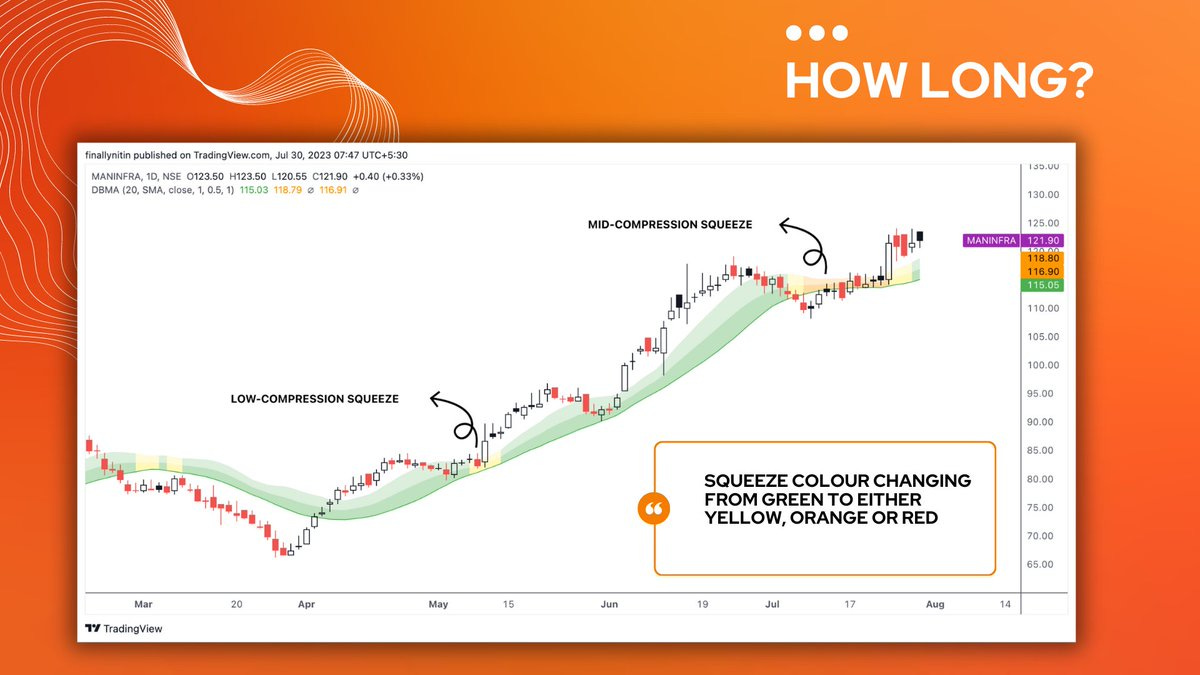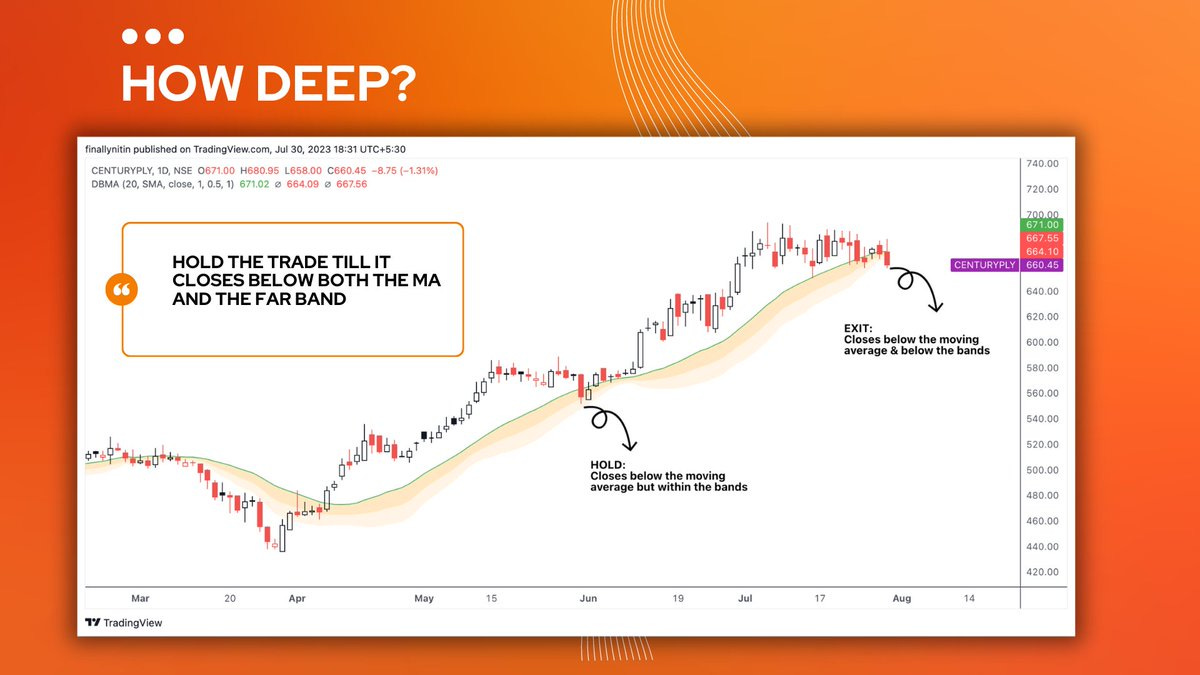Presenting the Dual Bollinger moving average (DBMA) that I'm currently using on my charts. It's just a 20-day simple moving average (MA) with 2 upper Bollinger Bands (BB), having the standard deviation (SD) settings of 0.5 & 1.
How close the price is to the moving average?
As a pullback trader, I prefer to buy them close to the 20-day MA. How close is where the bands serve as a guide. I prefer the low of the signal day to be at least within 1 SD of the MA. if it's within the near band (0.5 SD), it's even better. When the price is outside the bands, it should not be considered favourable for a pullback entry. Also, the bands themselves must not be 'looking away' from the MA.
For how long has the price been closer to the moving average?
Turning the Squeeze colour option 'on' changes the colour of the bands as per John Carter’s TTM Squeeze indicator. The High, Mid & Low compression squeezes are depicted via the colour of the bands being red, orange, or yellow, respectively. With the low of the pullback candle within the bands, & the squeeze colour changing to red, it should be considered favourable for a pullback entry.
Trailing the price with the Bands
The lower bands can be used for trailing with the moving average. Here, instead of exiting the trade just as it closes below the MA, we use the bands to give it some cushion. Let the price close below the 1SD band for labelling the TSL as being triggered to exit the trade. If the price closes below the MA but is still within the bands, the signal is to keep holding the trade.
Creating the indicator using built-in tools
You can create this by using the built-in moving average indicator, along with two BB indicators, with their SD values changed to 0.5 & 1.0, & the upper & lower lines turned-off, & just the background colour turned on. It's not some huge breakthrough, or a magical tool that'll change your trading overnight, but somehow helps me in taking some better pullback entries.
The Script
Here is the link for the DBMA - Dual Bollinger Moving Average script for Tradingview:






